Let’s discuss how you can integrate Google Sheets with WhatsApp by AiSensy and automatically send bulk WhatsApp messages at a specific time using data from Google Sheets.
This automation requires a one-time setup, for which we will use Pabbly Connect.
We will first add a Schedule trigger to the workflow to set a specific time for sending the message, link Pabbly Connect with Google Sheets to capture the data, then link Pabbly Connect with WhatsApp by AiSensy and send bulk WhatsApp messages.
Steps to Automatically Send WhatsApp Messages in Bulk from Google Sheets
1. Sign In / Sign Up to Pabbly Connect and Create a Workflow
2. Add Schedule as the Trigger App to Set Message Sending Time
3. Setup Google Sheets as the Action App to Capture Data
4. Add an Iterator to the Workflow to Organise Data
5. Setup WhatsApp by AiSensy as the Action App to Send Messages
Step 1:- Sign In / Sign Up to Pabbly Connect and Create a Workflow
A. Sign In / Sign Up
To begin this process, visit Pabbly Connect and create your account by clicking on the ‘Sign Up Free’ button. You can also click on Sign In if you already have an account.
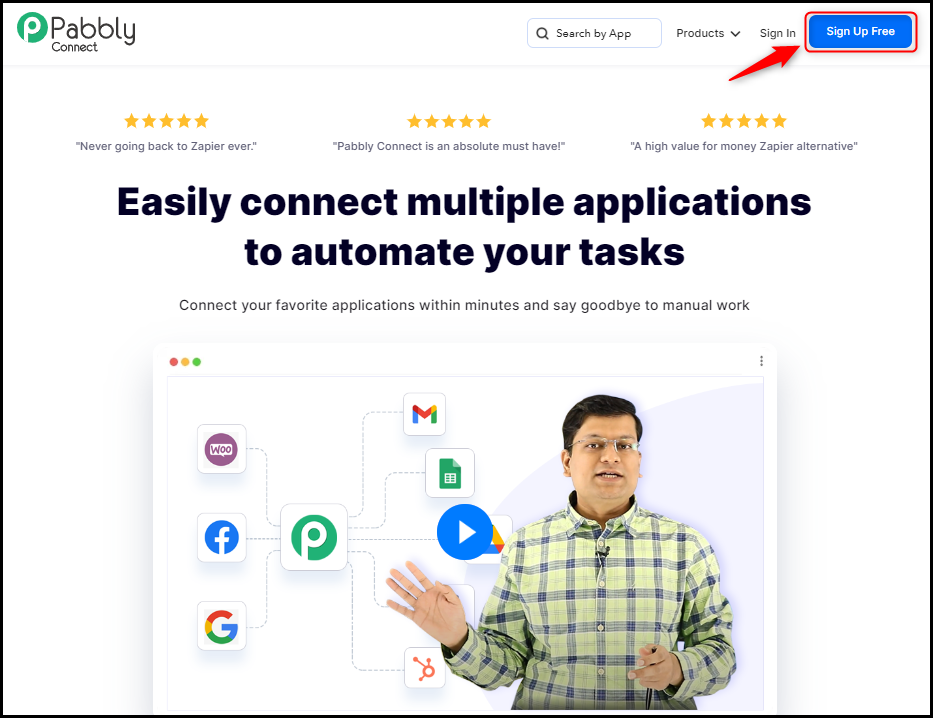
Click on the Pabbly Connect ‘Access Now’ button

B. Create Workflow
To create a new workflow, click the ‘Create Workflow’ button.
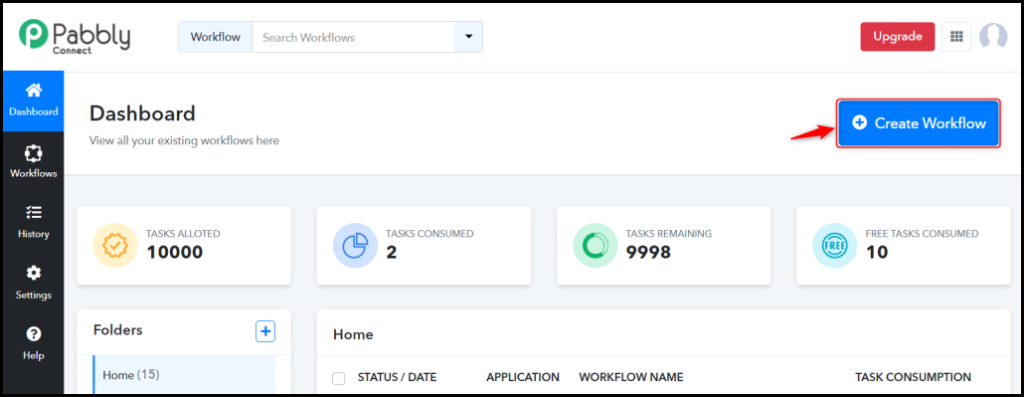
Name your workflow, and click on ‘Create’.
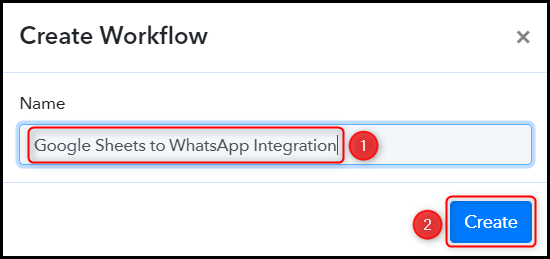
Step 2:- Add Schedule as the Trigger App to Set Message Sending Time
Trigger is the app that executes the workflow. Since we want to send messages and execute the workflow at a specific time, in our case it would be Schedule by Pabbly.
A. Trigger App
Choose ‘Schedule by Pabbly’ as the Trigger App, select how often you want to send the message, set a Date and time to execute the workflow, and click on ‘Save’.
Note: Make sure to check your Time Zone.
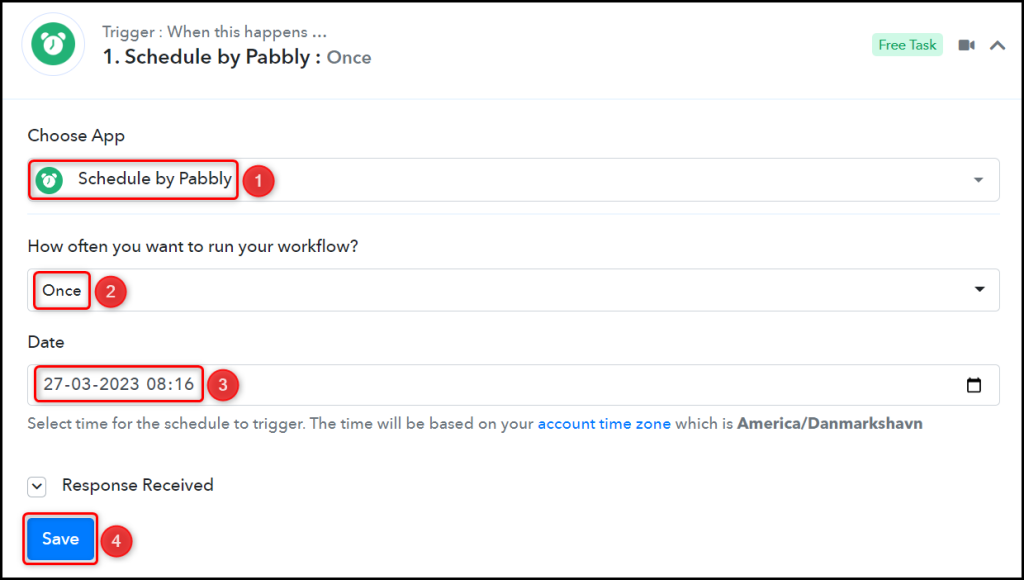
Step 3:- Setup Google Sheets as the Action App to Capture Data
Action allows us to choose the application that will get executed by the workflow trigger.
We essentially want to capture the data stored in Google Sheets. Thus, Google Sheets will be our Action App.
A. Action App
Choose ‘Google Sheets’ as the Action App, select ‘Get Row(s)’ as an Action Event, and click on ‘Connect’.
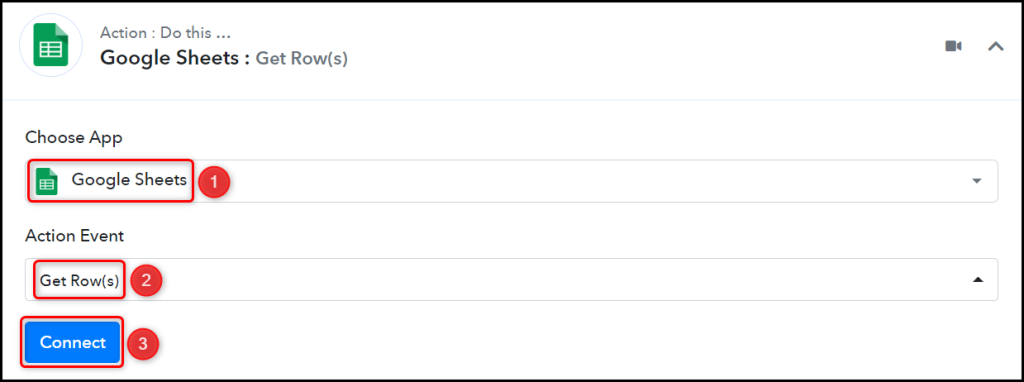
B. Connect Google Sheets Account
To connect with your Google Sheets account, select ‘Add New Connection’, and click on ‘Connect With Google Sheets’. Also, grant the authorization.
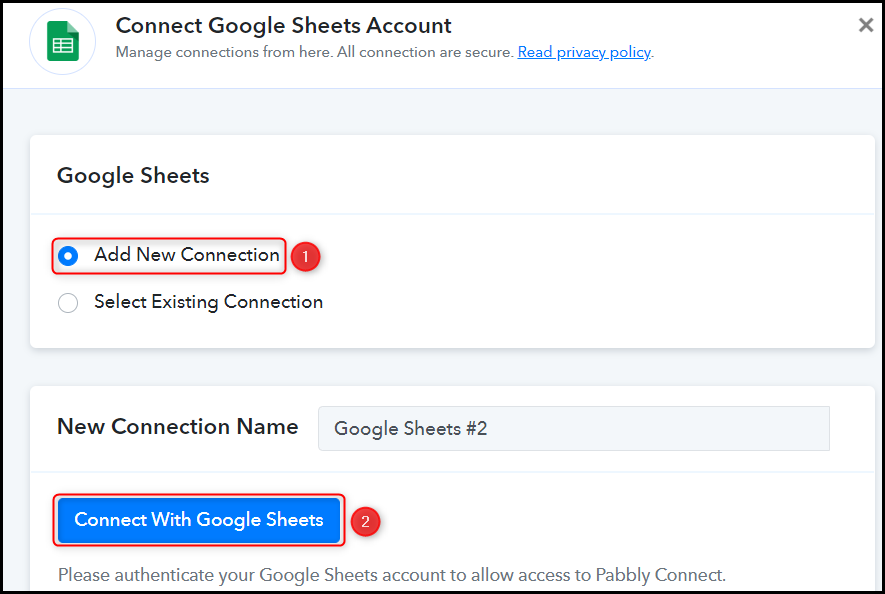
Select the Spreadsheet and Sheet from where you want to capture the data.

Enter the Range for your data, toggle off Simple Response, and click on ‘Save & Send Test Request’.


Expand Response Received, and the data you entered must be visible, thus confirming our established connection.

Step 4:- Add an Iterator to the Workflow to Organise Data
The data we captured from Google Sheets is unorganized – To organize and separate the data by row, we will use Iterator by Pabbly.
Add another Action Step to your workflow by clicking the ‘+’ button.

Choose ‘Iterator by Pabbly’ as the Action App, and click on ‘Save & Send Test Request’.
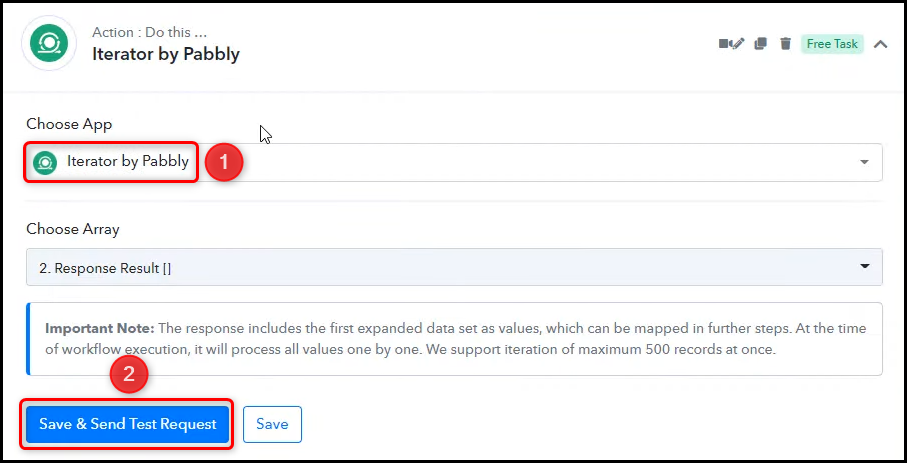
The data is now arranged in proper row format, and we can use it to send messages.
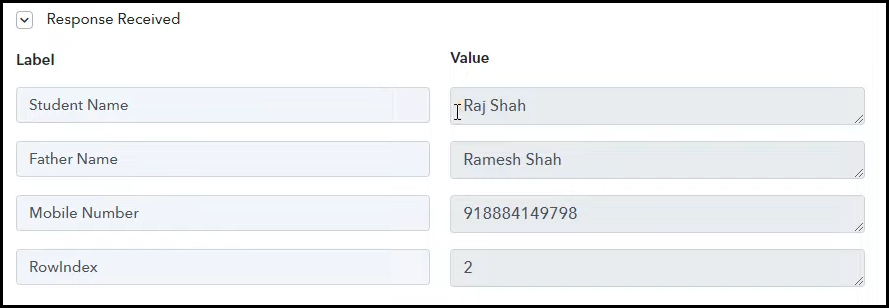
Step 5:- Setup WhatsApp by AiSensy as the Action App to Send Messages
We essentially want to use the captured data to send bulk WhatsApp messages. Thus, WhatsApp by AiSensy will be our Action App.
Add another Action Step to your workflow by clicking the ‘+’ button.

A. Action App
Choose ‘WhatsApp by AiSensy’ as the Action App, select ‘Send Template Message’ as an Action Event, and click on ‘Connect’.
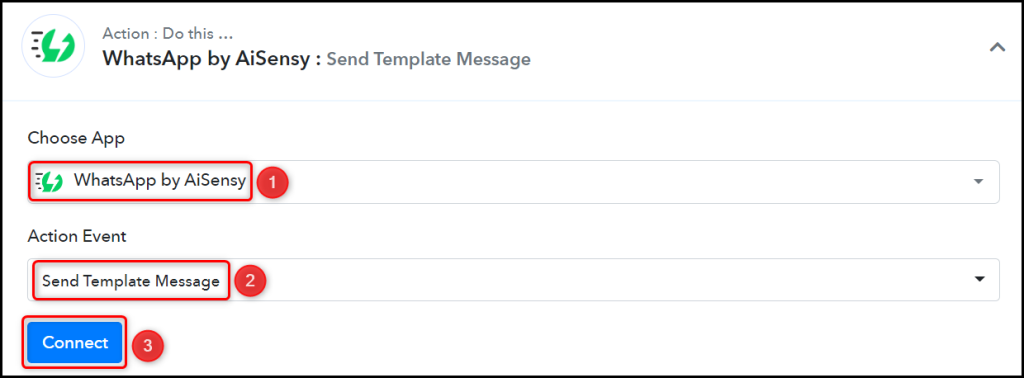
B. Connect WhatsApp by AiSensy Account
To connect with your WhatsApp by AiSensy account, select ‘Add New Connection’. You will be asked to enter your API Key.
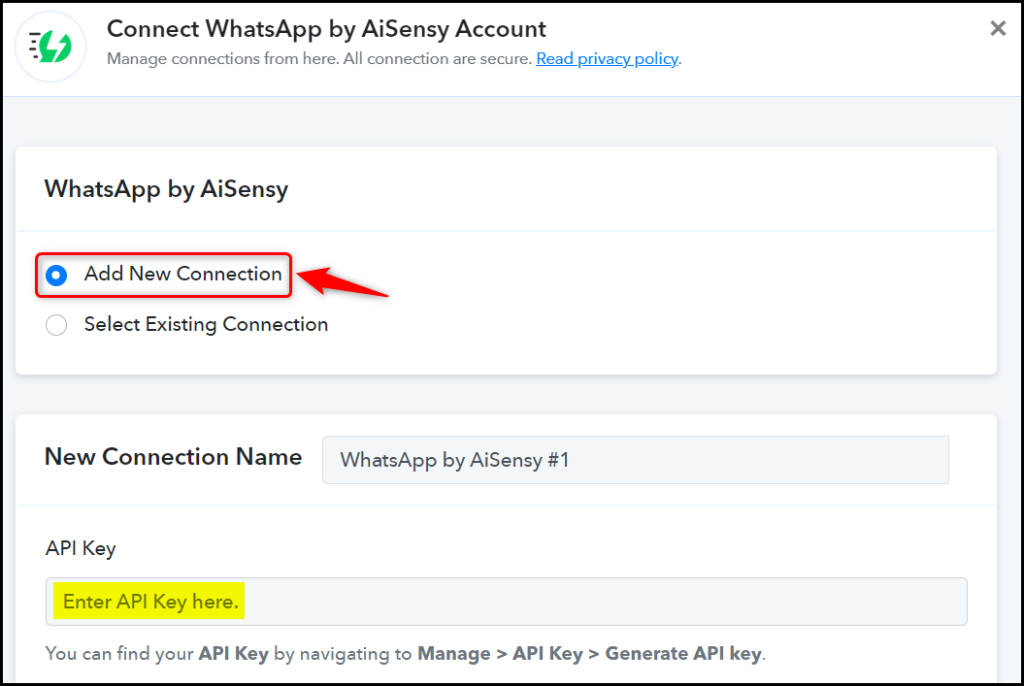
Log in to your AiSensy account, and click on ‘Manage’ > ‘API Key’ > ‘Click to copy’.

Paste the API Key in its given field, and click on ‘Save’.
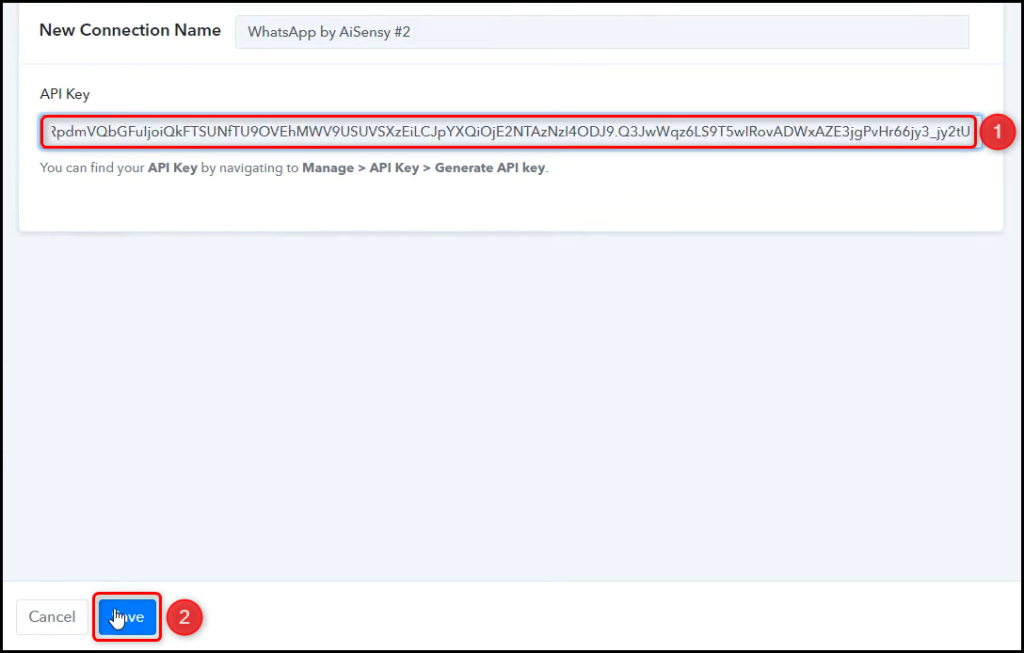
Switch to your Aisensy dashboard, and click on ‘Campaigns’ > ‘Launch’. Then click on ‘Next’ under the API tab.


Name your Campaign, select the Template of your message, and click on ‘Set Live’.
Note: To personalize your message, include Dynamic Data Tags in your template. Dynamic Data Tags help us to include variables in our template, these variables will be replaced with actual data in your message. The actual data can be a name, an email address, date, time, ID number, etc. To add a dynamic tag to your template, write your variables between double curly braces {{variable}}.
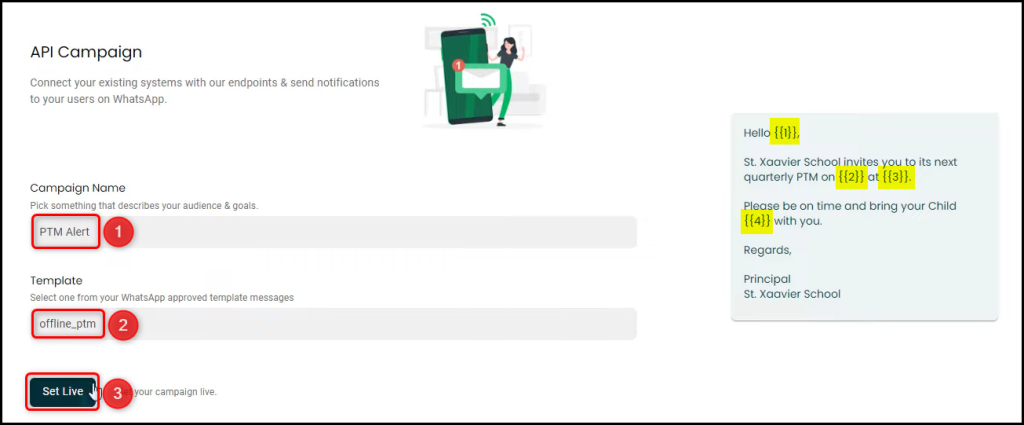
Select your Campaign Name.

C. Map Necessary Fields
Now that you have connected your AiSensy account, all you need is to map the necessary details from the step above. Mapping ensures our data remains dynamic and changes as per the received responses.
Map the Mobile Number from the step above.
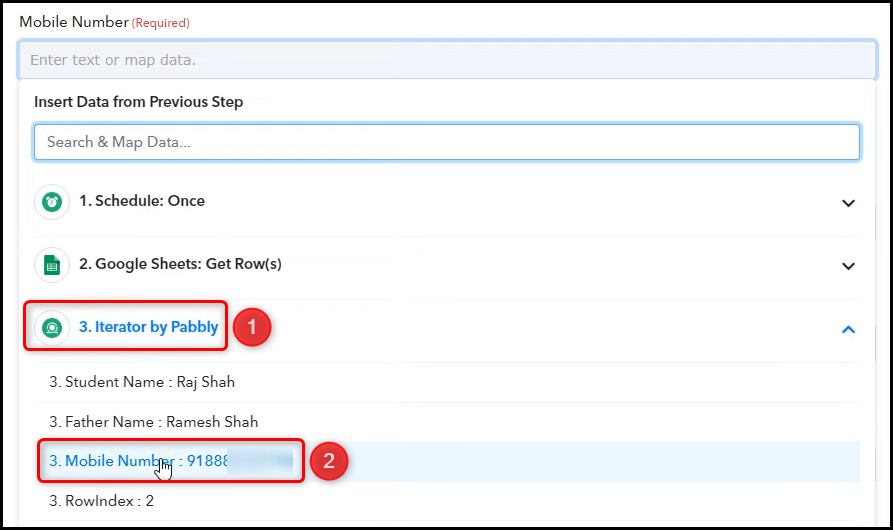
Similarly, map the User Name.

Map / Enter the Template Parameter from the step above. These parameters will replace the Dynamic Tags in your message. Also, click on ‘Save & Send Test Request’.

Once you click on Save & Send Test Request, a WhatsApp message will be sent to all the recipient’s mobile numbers at the specified time.

Our automation is complete. We have successfully integrated Google Sheets with WhatsApp by AiSensy. Each time you want to send bulk WhatsApp messages, you can do so using this workflow.
You can copy this entire workflow by clicking this link.
Sign Up for a free Pabbly Connect account, and start automating your business
Subscribe to our Youtube Channel for more such automation
For any other queries, visit our forum
